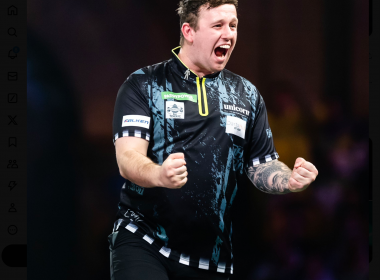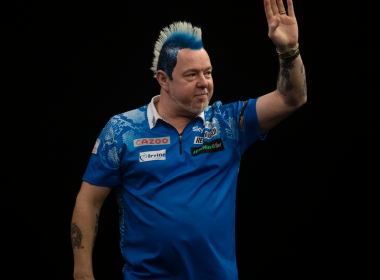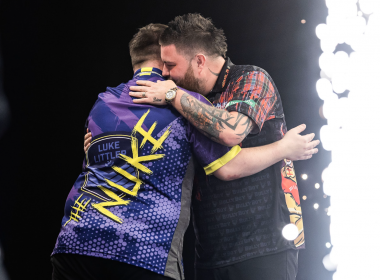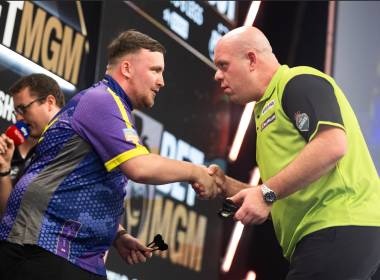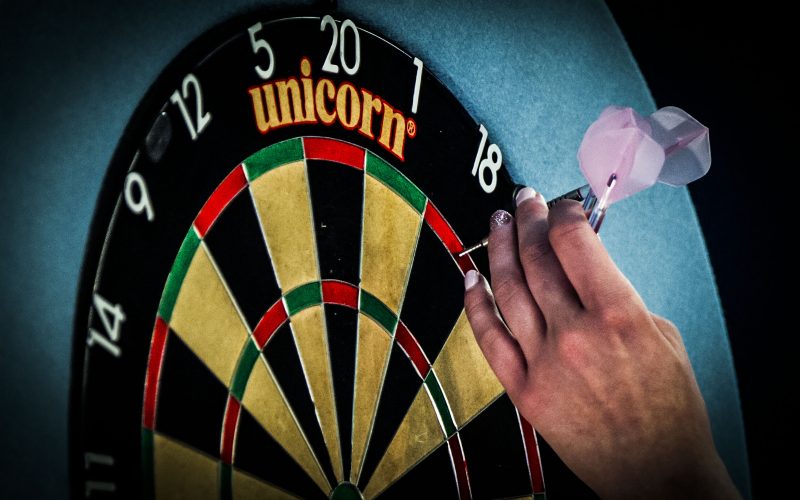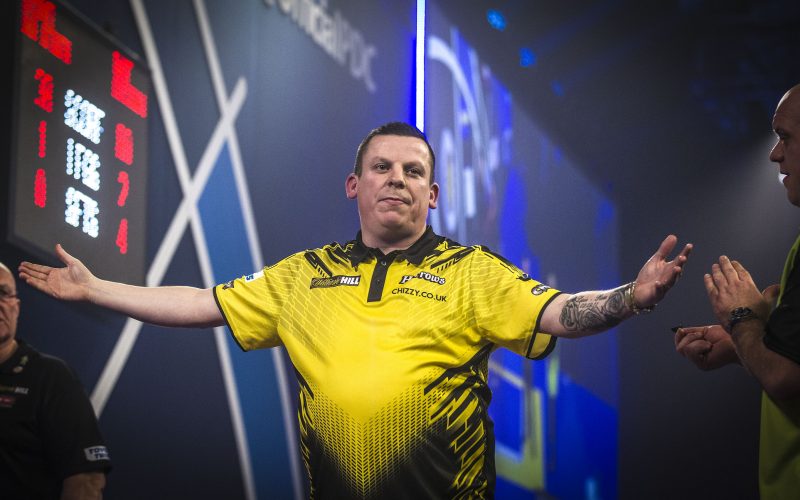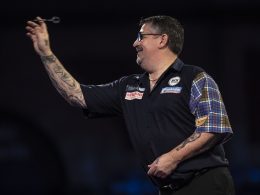Should some players consider a change of approach?
Most players have a double they like to leave when setting up a finish – normally 20 or 16. If these are not their outright favourite, they usually begin a sequence that can lead to a shot at their favourite. For example, James Wade and Michael Smith both like Double 10 and opt to leave Tops as much as they can. Dimitri Van den Bergh and Rob Cross tend to avoid it – engineering ways to leave Double 18 if it’s on, but more frequently, given the way that legs pan out, Double 16. Gerwyn Price has previously stated that Double 12 is his favourite but practically, 24 can’t be left nearly as easily as 40.
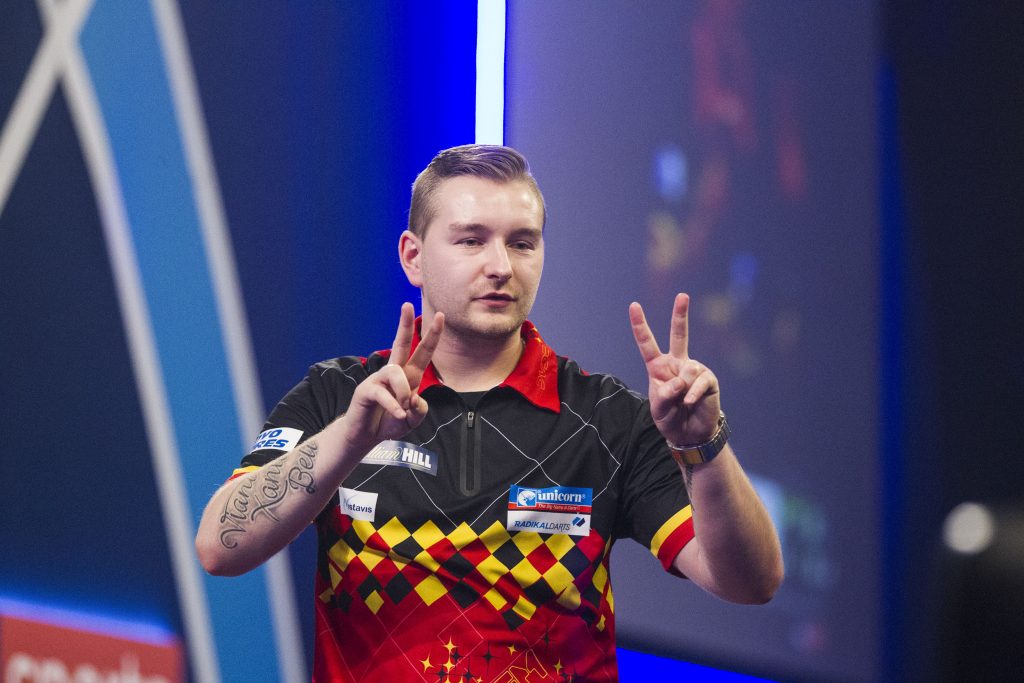
A player’s intuition isn’t always correct, and we were interested to see if some selected preferences were backed up by data.
Taking a sample of players who have a bias towards setting up certain numbers, the data we reviewed is from stage performances only, over the last two years. Two years is sufficiently long for the sample to be large enough, whilst being sufficiently short that it shouldn’t allow a player’s preference to change too much over that period.
The Double 18 Club
Van den Bergh and Cross will generally avoid leaving 40, if leaving 36 or 32 is a possibility. Van den Bergh has attempted Tops 270 times in the study period, versus 485 attempts at Double 16. He has had 202 attempts at Double 18, which is obviously more difficult to set up from typical numbers that a player will be left on as they approach a finish. Cross’s distribution is similar: 239 darts at Tops versus 484 at Double 16 and 289 at Double 18.
Both players have higher success levels on Double 18 than on Tops. Van den Bergh is 45% from those 202 attempts and Cross is 43% from his 289 attempts. On the other hand, they are both around 37% on Tops. In situations where there will only be one dart left at double, it makes sense for them to leave 18s if they can – for example, on a score of 76, if the first dart hits Single 20, going for another Single 20 is logical to maximise their chances of winning on that turn.
When it becomes less clear, is when the set up allows for more than one dart in hand at the double. If you have three darts, you can of course split 40 twice and still have a shot, but you can only split 36 once. A second time ends your chances of winning the leg on that turn. We can calculate the chances of finishing 36 or 40 with two or three darts in hand, using a player’s percentages on the Double 20, 10 and 5 segments and the Double 18 and 9 segments, whilst also factoring how often they miss on the inside and outside of the wire. These calculations compute Van den Bergh as having a 74% probability of finishing with three in hand at 36, and a 72% probability for Cross. Their overall chances of finishing 40, by contrast, are: 75% (Van den Bergh) and 78% (Cross). Both Van den Bergh and Cross hit Double 9 less than 1 in every 3 darts. In situations when leaving two darts in hand at double (e.g. when coming to the board on a score of 56), Cross is a stronger bet on a score of 40 than he is on 36, due to this inconsistency on Double 9. For Van den Bergh, the Double 18 option shades it, but only just.
Dave Chisnall is another who in the past has shown a bias towards 36. This has levelled out in recent times – he has thrown 487 darts at Tops compared to only 143 at Double 18 and 113 at Double 16. Of these three segments, his success percentage on Double 16 is actually the highest (44% compared to 40% on Tops and 37% on Double 18). His overall chances of finishing 32 with three darts in hand come out at 80%, compared to 73% for 36 and 76% for 40. With one, two, or three darts in hand, Chisnall is a safer bet on 40 or 32 than he is on 36, on this evidence.
The Tops Club
Gerwyn Price, James Wade, Michael Smith, Gary Anderson and Ryan Searle have the most one-sided distributions in favour of leaving Tops. All of them have thrown less than 15% of darts at Double 16 as a proportion of what they have thrown at Tops, and in Wade’s case, less than 6%. This makes any comparison between the two routes less meaningful because we are dealing with somewhere between one tenth and one twentieth of the sample size when looking at their success on Double 16.
That said, Wade is incredibly accurate on the left-hand side of the board where he rarely finds himself – hitting 52% of his 44 attempts at Double 16 and 58% of his 59 attempts at Double 8. If you were thinking The Machine was more likely to give his opponent a chance when he ends up over there, based on this data you can think again. It doesn’t seem to matter where on the outer ring Wade is aiming – he is deadly.
Ryan Searle is the new kid on the block when it comes to the Double Top giants. Searle’s precision on the red bit is rising and currently stands at 43% in the past two years on stage. What is worrying for Searle fans though, is that he doesn’t mop up the splits with anything like the same reliability as the others (with the possible exception of Anderson, whose numbers are in decline). Of Searle’s 218 attempts at Double 10, he has hit only 29%, with a saving grace possibly being that he is quite efficient on Double 5 when he needs it (38%).
D20/10/5 Percentages of the Tops Club
| Player | D20% | D10% | D5% |
| James Wade | 42.99 | 47.11 | 43.62 |
| Gerwyn Price | 44.95 | 40.44 | 39.82 |
| Michael Smith | 39.43 | 43.34 | 34.10 |
| Gary Anderson | 38.43 | 33.33 | 40.91 |
| Ryan Searle | 43.12 | 29.82 | 38.16 |
Albeit over a much smaller sample size, Searle actually breaks down more favourably on 32. He has hit Double 16 with 43% of his attempts, he has hit Double 8 with 32% of his attempts, and he has hit Double 4 with 41% of his attempts. It would be fascinating to see if this pattern continued over a much larger number of attempts because on this sample alone, he would be slightly more effective on 32 – a big surprise. These numbers are based on the total throws at those doubles and therefore do not fully represent the dynamics of splitting – i.e., moving around the board on each occasion, which can affect a player’s accuracy.
Michael Smith’s prowess on the left-hand side of the board also seems grossly underestimated (perhaps even by himself). Smith has thrown 258 darts at Double 16 and Double 8 combined and landed 42% of them (it is a very similar percentage for both segments individually). He is a monster when moving over to Double 4 too, hitting 49% of his 83 attempts. Like Searle, we don’t know if this pattern would be sustained over another 300 to 400 darts thrown, to make a more meaningful comparison to his results on Double Top and Double 10.
Gerwyn Price and Gary Anderson are both considerably weaker on 16s and 8s, which they quite rightly stay away from when they can (Price is 33% on Double 16 and 39% on Double 8).
The 32 Club
Of players with a penchant for 32, we chose Mervyn King, Joe Cullen, Jonny Clayton, and Stephen Bunting.
King has taken more of a liking to Tops of late, and therefore his distribution is more even than it might have been five years ago. He has in fact thrown more darts at Tops than Double 16. Despite this, he has been way more accurate on the 32/16/8 breakdown, with 47%, 40% and 58% respectively. By comparison he is ‘only’ 41% on Tops, 40% on Double 10 and 39% on Double 5. It makes sense for The King to continue with his historically preferred 32 route whenever he has the option.
Cullen is much stronger on that side of the board as well. The Rockstar has hit 45% of his 584 attempts at Double 16 and 40% of darts at Double 8. On Double 4 he is also very effective (42%). On 40 he is considerably less so, with 38% at Double 20, 36% at Double 10 and 28% at Double 5. There can be no arguments for The Masters Champion making changes to his strategy, and neither can there be for his good friend Jonny Clayton.
Clayton is 48% on Double 16 from almost 700 attempts, and 44% from almost 500 attempts at Double 8. Given those numbers, he shouldn’t be throwing for Double 4 very often but when he does, he still comes in at 41%. The Ferret’s capability on Doubles 20, 10 and 5 is a more than acceptable 41%, 39% and 37% respectively, putting him in amongst the most versatile outer ring throwers in the world alongside James Wade, Michael Smith and Mervyn King, but is nowhere near enough to necessitate a rethink of his preferred routes.
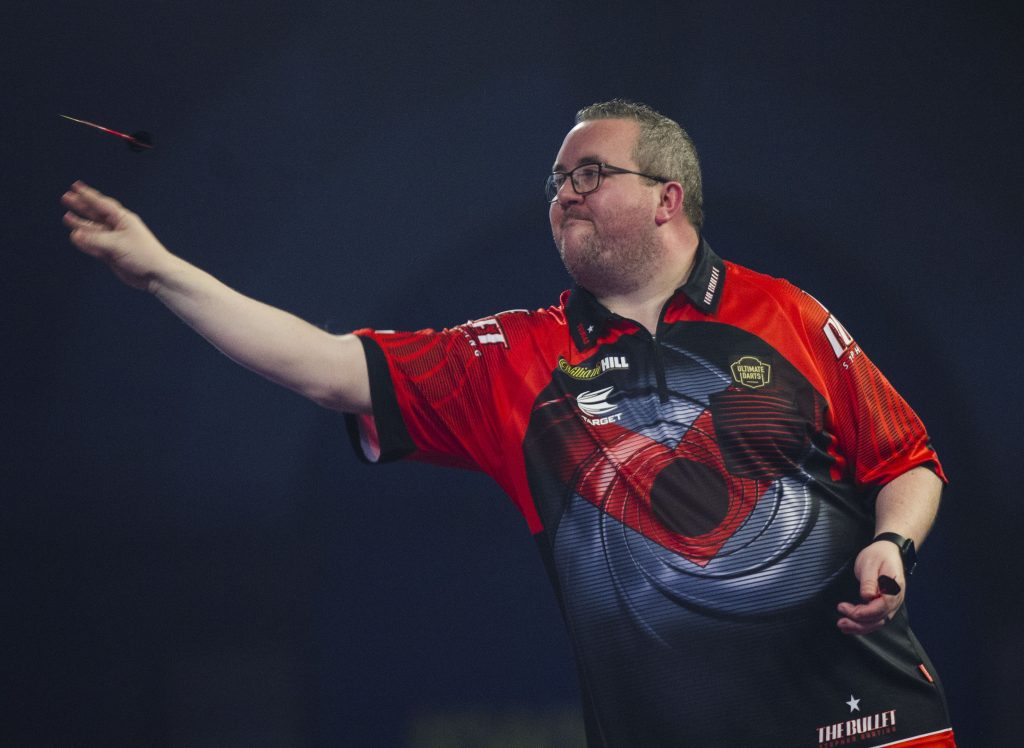
Bunting is more intriguing, especially considering he made the decision to start on Tops at the 2021 World Grand Prix, and did so with a lot of success. This suggests he may see a future in a departure from the Double 16 segment. Of all the major doubles, Bunting is best, statistically, on Double 16 (42%) and this dwarfs his success (33%) on Tops. He is a lot more effective on Double 10 (39%) than he is on Double 8 (32%) though, over a similar number of attempts. On Double 5, Bunting is one of the finest in the business (44%), but he is even more accurate on Double 4 (45%). Overall, this makes him marginally more effective on 32 than 40 with three darts in hand, however the tide could be turning – with such fine margins and with 40 being easier to leave on a regular basis, The Bullet might consider an adjustment. Added to this, he goes inside Double Top more frequently than he goes outside, opening up a higher probability shot at Double 10 whenever that happens.
D16/8/4 Percentages of the 32 Club
| Player | D16% | D8% | D4% |
| Mervyn King | 46.77 | 40.37 | 58.49 |
| Jonny Clayton | 47.81 | 43.54 | 40.91 |
| Joe Cullen | 44.52 | 40.32 | 42.06 |
| Stephen Bunting | 42.25 | 32.40 | 45.28 |
One conclusion that we can draw is that the 32 throwers appear to be more clinical than their Tops Club counterparts on their preferred routes, on average. This is a trend that is repeated across more players that we looked at in less depth. For example, Nathan Aspinall’s ruthlessness at taking out 32 sits right up there with Clayton and King, numerically. Tops throwers always have the added advantage though, of knowing their favoured sequence is accessible a higher percentage of the time. Even those with the strongest bias towards Double 16 still need to throw a lot of darts at Tops.
As for Double 18, this appears to be a false economy, especially if the set-up is to leave 36 with three darts. For those who are much better on that segment, they are not so much better that it outweighs the added dimensions of their Double 9 fallibility, combined with the danger of going inside and wiping out a potential third dart at a target. Even with two darts in hand, the best Double 18 throwers are usually more likely to go out on 40 or 32 because they are generally more accurate on Double 10 or Double 8 if they split, than they are on Double 9.
Could the Double 18 species be heading for extinction? With characters like Mardle, van Barneveld and Chisnall strutting their stuff over the years, that sounds like a boring prospect.
Editorial Staff


